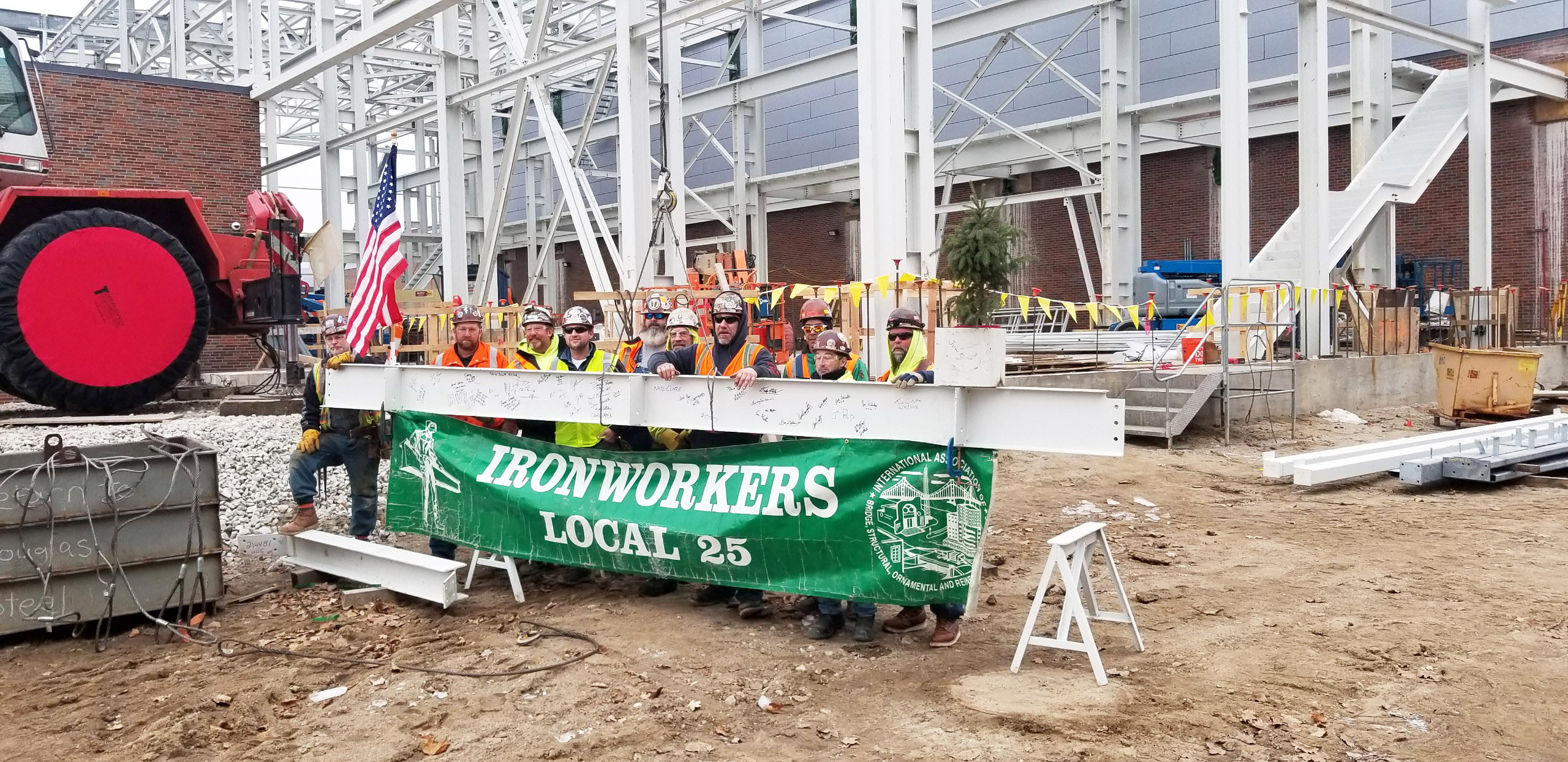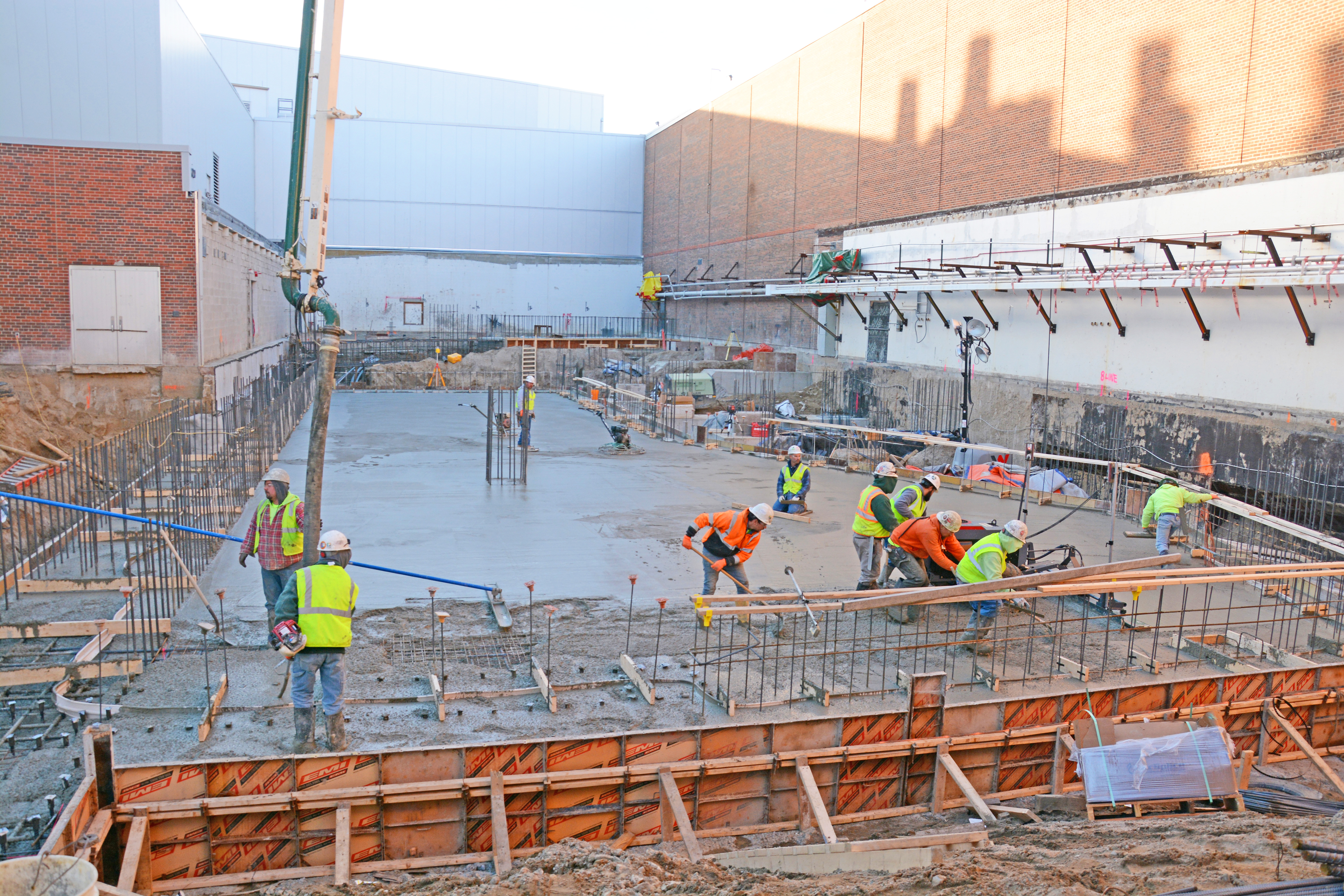Construction returns to the FRIB at Michigan State
Date Posted: March 22 2019
Construction of the major portion of MSU's $730 million Facility for Rare Isotope Beams began in 2014 but has wound down in recent years, with hundreds of scientists now on site doing their work.
But the 227,000-square-foot project isn't complete: In recent months Local 25 iron workers topped out the steel on the Cryogenic Assembly Building on the east side of the FRIB campus. And toward the center of the development, flat work and rebar have been installed to support the High Rigidity Spectrometer and Isotope Harvesting Facility. The additional construction and technology will cost $35 million.The Michigan State University Board of Trustees approved the projects in December 2017. The 14,000 square-foot cryogenic facility is being built as a result of a need for additional space for research on equipment operating at liquid-helium temperature, including development, assembly, testing, and repair of superconducting FRIB beam line magnets and superconducting radiofrequency cryomodules.
The 31,000-square-foot spectrometer/isotope facility will house research equipment beyond the original FRIB scope and bolster MSU’s nuclear-science research program by expanding FRIB’s discovery potential and enabling isotope harvesting."We are grateful the board has authorized planning for these building additions that will house research equipment beyond the original FRIB scope and bolster MSU’s nuclear-science research program by expanding FRIB’s discovery potential and enabling isotope harvesting,” said Thomas Glasmacher, FRIB Laboratory director. “The projects underscore MSU’s commitment to operating the world’s most powerful rare isotope accelerator, enabling scientists to make discoveries that will lead to breakthroughs in nuclear science and applications benefiting society.”
It was a huge coup for Michigan State University to be awarded the FRIB in 2008. According to MSU, "FRIB will enable scientists to make discoveries about the properties of rare isotopes in order to better understand the physics of nuclei, nuclear astrophysics, fundamental interactions, and applications for society. As the next-generation accelerator for conducting rare isotope experiments, FRIB will allow scientists to advance their search for answers to fundamental questions about nuclear structure, the origin of the elements in the cosmos, and the forces that shaped the evolution of the universe."The entire FRIB facility is expected to be complete by 2022.

DOUGLAS STEEL handled the structural steel portion of the Cryogenic Assembly Building at the FRIB, which was topped out in January after Local 25 iron workers were on the job about eight weeks. Field Supt. Mike Roberts said the steel was “nothing out of the ordinary,” compared to other parts of FRIB that incorporated massive beams the size of which most iron workers will rarely see again. “It was a typical, straightforward job, and it went very well,” Roberts said. Photo credit: Marc Crance

CEMENT MASONS place concrete for the High Rigidity Spectrometer foundation slab at the FRIB on the campus of Michigan State University in East Lansing. The addition is scheduled to be completed in November 2019.The 31,000-square-foot building is one of two MSU-funded additions under construction at FRIB. The High Rigidity Spectrometer concrete placement used 62 tons of reinforced steel, nearly the weight of a passenger train car, to provide additional strength to the concrete and aid it under tension. The trades poured and placed a total of 517 yards of concrete at the site. The High Rigidity Spectrometer and Isotope Harvesting Vault will house research equipment for isotope harvesting and provide experimental space for the FRIB science program. Photo credit: Facility for Rare Isotope Beams
